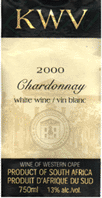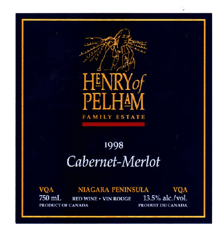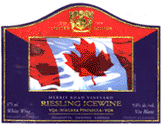![]()
Recent Articles

The
Gems of the Competition
At Canada’s most popular food & wine show
Michael
Vaughan • Wine & Spirits Columnist
National Post • Saturday, March 17, 2001
It
makes them green
with envy and it hasn’t got anything to do with St. Patrick’s Day! It’s my life
as a professional taster. Sure, it’s a tough job but somebody has to do
it.
And
when I complain to my friends, they shed crocodile tears. While casual
tasting is most certainly a joy, wine judging isn’t always a cakewalk.
Over the past three weeks I have waded through some 953 wines – over 40
a day! Multiply this by some three sips per glass and you have a
tongue-numbing 120 spits a day. Indeed, the total expectorated (the polite
word for spit) of this three-week period far exceeds the average
person’s wine consumption over a whole year!
Part
of these tastings were for next week’s Toronto Wine & Cheese Show.
Having judged at competitions around the world, I occasionally see results
that are not worth the paper they’re printed on. The key is not in
getting a lot of well-known personalities on a panel. It’s the acuity of
the taster’s palates that count. In fact, it’s not unusual to discover
that the very best wine has not succeeded when confronted by a large panel
of tasters with various skills. The reason is that less skilled tasters
often impose their personal likes and dislikes into the evaluation
process. The worst-case scenario sees different panels evaluating
subgroups of the same type of wines producing virtually meaningless
results. In contrast, a smaller panel of just a few highly qualified
tasters will give you much more consistent and, therefore, meaningful
results.
Organized
by the Food & Beverage Testing Institute, the wines are served blind
in small flights by varietal and in appropriate categories by price. It
makes sense to break out wines by price because a winemaker who receives
twice as much money for his wine and can afford to make a better product
by using more expensive grapes, better barrels, etc. Thus, the total
points to win a gold medal in the under $12 range, for instance, will be
less demanding than in the over $25 range.
There
are three levels of awards – gold, silver and bronze for 17 different
classes. Each class is broken down into smaller flights, which are graded
and given awards without any discussion between the judges. Then the
flight is carefully reviewed and final points tallied along with the
award, which must be unanimous.
It’s
tough because if 87 points is the threshold for a bronze, then there are
may be many 86.5 point wines that are worth buying but don’t make the
cut. As in any competition, a line has to be drawn. In addition, when a
faulty wine is found a new bottle was opened. The second sample isn’t
always sound. In a flight of seven Sauvignon Blanc (under $12), four were
corked. Our retasting revealed that only one newly opened bottles were
free of mustiness! It’s unnerving to think that there are a lot of folks
out there who are not offended by drinking musty wines! One obvious
problem with any competition is that a flawed wine may not be spotted.
In
the past there were only three medals per class. This seemed unfair
because in a class of 80+ competitors how do you decide whether the
92-point Riesling or 92 point Chardonnay should get gold?
You can’t – they both deserve gold! For the consumer, it’s
great to include a much wider selection all of which make the cut.
This
year’s competition saw some 500 entries and resulted in only 32 gold
medals – less than two per class or about 6% of the total! Where the
wines in a class didn’t make the cut, there was no award! There are also
“best of” awards focusing on the crème de la crème. Best yet, this
competition pits Canada’s best against its international peers – a
real competition of wines you can buy!
 Knowing
what to taste at next weekend’s show is critical. Starting at the top,
the “best value” white was the South African KWV
2000 Chardonnay a delicious buy
at $8.85 (all wines are at the LCBO unless otherwise noted). “Best of
show” white was Ontario’s Cilento
1999 Chardonnay Reserve a stellar
example at $29.95 (currently at the winery only).
Knowing
what to taste at next weekend’s show is critical. Starting at the top,
the “best value” white was the South African KWV
2000 Chardonnay a delicious buy
at $8.85 (all wines are at the LCBO unless otherwise noted). “Best of
show” white was Ontario’s Cilento
1999 Chardonnay Reserve a stellar
example at $29.95 (currently at the winery only).
 “Best
value” red was the Chilean Concha
y Toro 1999 Cabernet Sauvignon fine value at $10.40, while the
“best of show” red was the remarkable Henry of Pelham 1998 Cabernet/Merlot
available through Vintages ($29.95) or at the winery.
“Best
value” red was the Chilean Concha
y Toro 1999 Cabernet Sauvignon fine value at $10.40, while the
“best of show” red was the remarkable Henry of Pelham 1998 Cabernet/Merlot
available through Vintages ($29.95) or at the winery.
With
Easter around the corner, this “best of show” off-dry fruit wine Stoney
Ridge 1999 Cranberry is a must-taste. It’s only $12.95 and
has a delicious, fresh, slightly sweet, ripe cranberry flavour with just
the perfect touch of tartness. It’s the perfect elixir for a juicy,
freshly baked ham (turkey or chicken) and is part of the Vintages
“Essential” program.
 Finally,
the “best of show” sweet wine was Magnotta
1999 Riesling Icewine Merritt Road Limited Edition at $39.95
for 375 ml. (available only at Magnotta stores – call 1-800-461-9463).
Its sweet, rich, pungent, caramelized apple essence flavours will sweep
you off your feet - perfect all by itself.
Finally,
the “best of show” sweet wine was Magnotta
1999 Riesling Icewine Merritt Road Limited Edition at $39.95
for 375 ml. (available only at Magnotta stores – call 1-800-461-9463).
Its sweet, rich, pungent, caramelized apple essence flavours will sweep
you off your feet - perfect all by itself.
You
can taste these award-winning wines at the respective agent booths at the
show as well as at the Wine Access booth where David Lawrason (who was on
the judging panel) will be on hand to taste them with you. To see all the
results click here: FBTI
Wine Awards
Running
next weekend, Friday (starting noon) through Sunday (6 pm), the Toronto
Wine & Cheese Show is the largest show of its kind in Canada with over
30,000 in attendance. It features more than a thousand wines by the glass
on a ticket basis.
As for me, I'll take an Irish 1798 Revolution Red Ale!
Copyright
Food & Beverage Testing Institute of Canada 2004
Prior written permission is required for any form of reproduction
(electronic or other wise) and or quotation.
Contact Michael Vaughan at
mbv@total.net